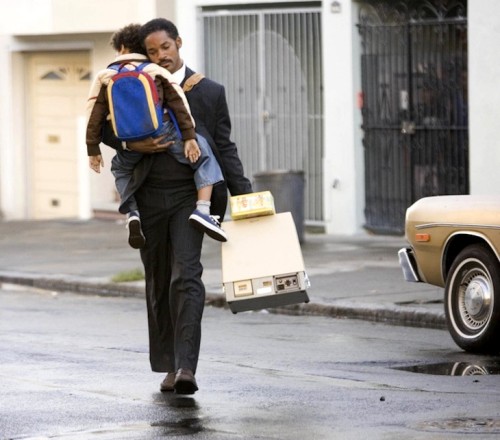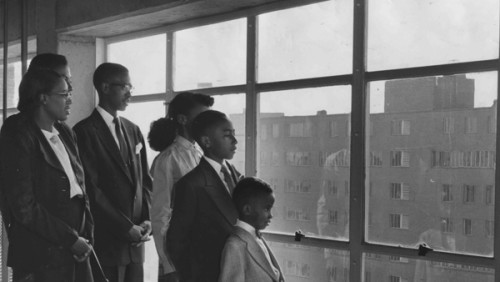Written by Jackson Adler.
Disney’s Oliver & Company (1988), which is very loosely based on Charles Dickens’s novel Oliver Twist, is about an anthropomorphic ginger male kitten named Oliver, voiced by Joey Lawrence, navigating New York City and trying to find a sense of belonging. In his day-to-day-survival, Oliver in confronted with issues of class, race, and gender. The title of the film is both indicative of a stage musical “company,” as the animated film is a musical, that of a business company, due to its economic and capitalist themes and its taking place in bustling metropolis New York City, and even to companionship itself, highlighted by most of the characters being companion animals. Oliver eventually finds a friend and what Bitch Flick’s Brigit McCone refers to as an “unruly mentor[s]” in Dodger, a mutt Terrier voiced by Billy Joel, who introduces himself with the song “Why Should I Worry?”
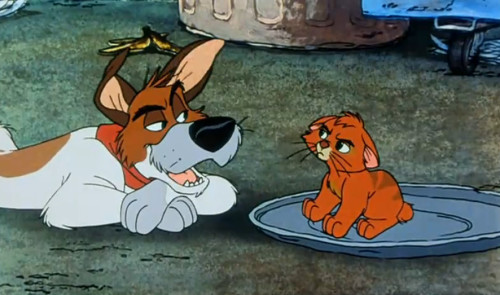
While Oliver may seemingly be the protagonist of the film, the audience in encouraged to see Dodger as the hero that Oliver learns to see him as, and the story is largely from Dodger’s White cismale heterosexual perspective. While Dodger is a flawed character, he is also shown as the ideal urban dog/man, who is going to “cross that line” into success despite his impoverished past. He states that he belongs anywhere, and that he is “love[d]” in every part of town and by all kinds of people/dogs. In the same scene, if not sentence, he switches between slang, Spanish, and a use of language showing “higher” learning. As Natshee Blu Barnd states in her essay “White Man’s Best Friend: Race and Privilege in Oliver and Company,” Dodger is representative of a mixed European heritage, a sort of White “mutt,” and is representative of a blue-collar worker who feels he can “own” the town and is capable of “wear[ing] the crown” of fame and monetary success.
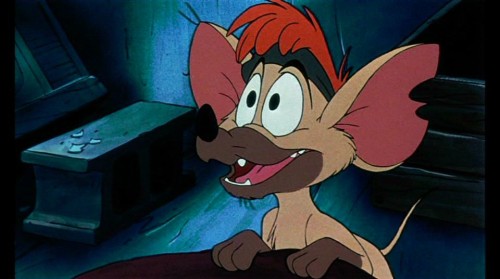
Dodger is able to feel comfortable wherever he goes and with whomever in the city, but Dodger’s friend, Tito, a Chihuahua voiced by Chicano comedian Cheech Marin and whose character is written to exhibit some harmful stereotypes of Latino men, does not have this same privilege. Both Tito’s speaking patterns and behaviors are frequently criticized by other characters, including Dodger. In order for Tito to be even slightly included by mainstream or upper class White society, or even in Dodger’s company (in every sense of the word), he is pressured to change himself, such as when the wealthy White Georgette attempts to make him wear clothing she finds more acceptable of a romantic partner. While Dodger’s appropriation of various cultures is considered “cool,” Tito’s very identity is considered comic relief, at best, despite both him and Dodger being poor, both stealing, both wearing bandanas, and both being able to switch back and forth between English and Spanish. The fact that Dodger is voiced by Billy Joel, a musician capitalizing on a working class background and appropriation of the musical styles and culture of People of Color, is not coincidental.
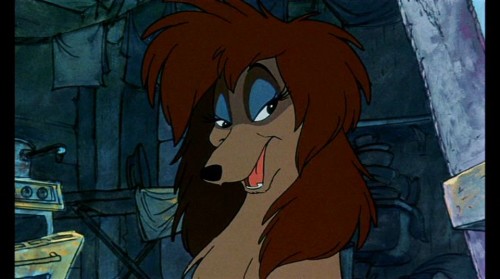
Tito, representative of a Man of Color, gets more screen time than Rita, a character coded to be a Woman of Color, most likely Afro-Puerto Rican. Both Rita’s speaking and singing voice actresses are Black (Sheryl Lee Ralph and Ruth Pointer), while she is drawn as an Afghan hound (a dog breed often incorrectly referred to as an “African hound”), but having a light brown coloring (though there are black Afghan hounds), and has a name often associated with Latinas. Rita is Dodger’s second in command of Fagin’s “gang,” Fagin being a White semi-homeless man who occasionally but often unsuccessfully steals and cons in order to survive, and who is voiced by Dom DeLuise. Rita and Dodger are good friends and possible love interests, and while they both show sexual interest in other dogs, Rita and Dodger are close and flirtatious with one another. However, Rita, the only female in Fagin’s “gang” of dogs, is always second to Dodger, and even though she questions him and makes fun of him, they do not have an equal partnership.
Rita is the closest character in the film to Dickens’s character Nancy, the sex worker with a heart of gold who protects Oliver. Oliver Twist was serialized from 1837-1839, and yet, sadly, Nancy has a more active role in the original story than Rita does in Disney’s 1988 film. Nancy goes against the wishes of her abusive boyfriend, Bill Sikes, to return Oliver to his grandfather and a wealthy lifestyle. She defies the men in her life, Bill and the successful criminal Fagin, for Oliver’s sake, and risks her own life to do what she thinks is right. Fagin manipulates Bill into murdering Nancy for this attempted act, since he fears it could compromise his safety and his pickpocketing business, but it is the murder of Nancy that brings down not only Bill, but also Fagin and his entire enterprise. Without the threat of these men, Oliver is able to live in safety and comfort with his wealthy grandfather. Though hardly a feminist character, Nancy is crucial to the story of Oliver Twist. Rita’s character in Oliver & Company has much less of a role, is no longer the leading lady, and is much less defiant to the male characters.
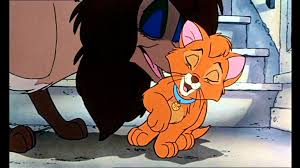
Rita briefly “mammies” the young White Oliver in her song “Streets of Gold,” encouraging him to see New York City as less threatening and to see survival via crime as fun, before Dodger and the others push Oliver into being their “lookout.” Dodger talks before the song, makes room for Rita’s song, then abruptly ends the song, showing his dominance over Rita and controlling her contribution to the story. When it comes to physically protecting Oliver, the closest Rita comes to it is when she sees Oliver blissfully sleeping in Penny’s mansion, and says to Dodger “Honey, let’s just forget the whole thing” about taking Oliver back with them and into poverty once more. Dodger instead chooses to listen to Georgette, a rich White dog show champion, over Rita. The gang then successfully kidnaps Oliver, though it is later shown that Rita was correct in that Oliver is happier living with a rich young White girl than he is with them. Though Dodger declines a romantic or sexual entanglement with Georgette, he still prioritizes the opinion of a rich White poodle/woman over that of a poor Woman of Color’s, even despite having just met Georgette and having worked and lived closely with Rita for what appears to have been a very long time. It’s also sad that while Rita is based on a lower class character from the film’s source material, the film added in a new female character who is wealthy and who takes up more screen time, contributes more to the story, and has more of a character arc than Rita. Wealth and Whiteness are clearly privileged over poorness and Blackness, despite the supposed but badly executed moral of the film being acceptance of one another.
Dickens’s novel addresses poverty and crime in 19th century Britain, specifically London, though Dickens largely blames these issues on Jewish people, specifically “the old Jew” Fagin, though Dickens also in part blames unjust laws and political corruption. Though the villain of Oliver & Company is a loan shark, the film mainly portrays poverty as something that just happens through strokes of bad luck, and which doesn’t have institutionalized causes via intersectional oppression from a capitalist society. In fact, the film largely blames poor people for being poor, tells them not to “worry” about the challenges and the kinds of stigma they face, glamourizes acts of survival, and overall tells oppressed peoples to pull themselves up by their own bootstraps, as it were. Rita shows how this oppression has been internalized when she tells Oliver she will teach him how “the best survive,” implying that poor and oppressed peoples who have difficulty surviving just aren’t “the best,” or at least need to trying harder at their survival. She “others” people who are like her, and teaches Oliver this “othering.” These “others” are implied to be unwilling to learn the “best” ways of surviving, and to be lazy. The story harmfully moralizes that if poor and oppressed people cannot get by without government programs such as SNAP, then they are just lazy, or at best just need to learn the correct way to “survive.” Instead of addressing the underlying causes of poverty and oppression, Oliver & Company gives the conflicting messages of “Why should [you] worry [about your own poverty]” and the message that if you can’t get by in life, it’s largely your own fault. Yet, even characters who find economic success are criticized.
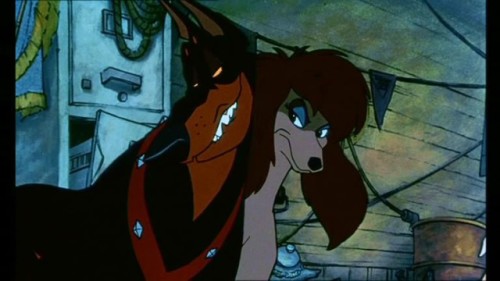
Roscoe and Desoto are Dobermans coded as Black, and having shiny black fur; they work for the loan shark Sikes. Sikes demands strict obedience from Roscoe and Desoto, while the hierarchy in Fagin’s gang is more relaxed. Roscoe and Desoto are drawn very similarly to one another, differentiated only by their voices and their red and blue collars. Roscoe criticizes Rita, saying, “You know Rita, I can’t figure out why you’d rather hang around a dump like this when you could be living uptown with a class act, like myself.” Though the male dogs in Fagin’s “gang” are the ones to respond to Roscoe’s statement, criticizing his intellect and ego, Rita makes her reason in choosing to stay in Fagin’s “gang” clear. When Sikes summons Roscoe, Rita says, “Run along, Roscoe. Your master’s calling,” her speaking voice actress Sheryl Lee Ralph emphasizes the word “master” and Roscoe’s fierce loyalty obedience to a rich White man. While Rita is loyal to Fagin, a White semi-homeless man, and to Dodger, she is not under contract to heed their every call, unlike Roscoe is to Sikes. At the end of the film, Rita interrupts Dodger’s reprise of “Why Should I Worry,” changing it to “Why Should We Worry,” and pulls him away from ogling other female dogs, though this hardly upsets their status quo, and Dodger’s position of dominance is not undermined by the inclusion of her voice in his song.
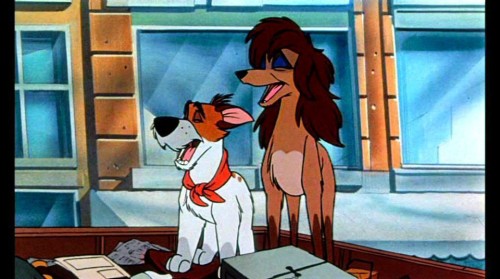
Sikes and his henchmen/dogs are shown to be the villains of the story due to their physical violence, but Dodger’s violence in interrupting or censoring Tito’s and Rita’s words and actions are harmfully shown as good leadership. Rita is permitted a short song of her own so as to benefit Oliver and Dodger. Tito, and other characters representative of People of Color never have their own songs, while White characters Dodger, Georgette, and Jenny do, with Dodger’s song being not only reprised, but being the film’s main theme. Inclusion in an oppressive system/Dodger’s privilege does not result in equality or equity for People of Color. As Audre Lorde famously said, “The master’s tools will never dismantle the master’s house.” Dodger allowing Rita to change his “I” to her and Tito’s “We” does not negate that Dodger constructed the song, and it is his words, his tune, and his message that he is permitting them to support. America is run by a White capitalist patriarchy, and like Dodger’s song, its occasional and token inclusion of People of Color does not make a post-racial and post-feminist world.
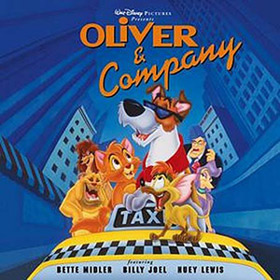


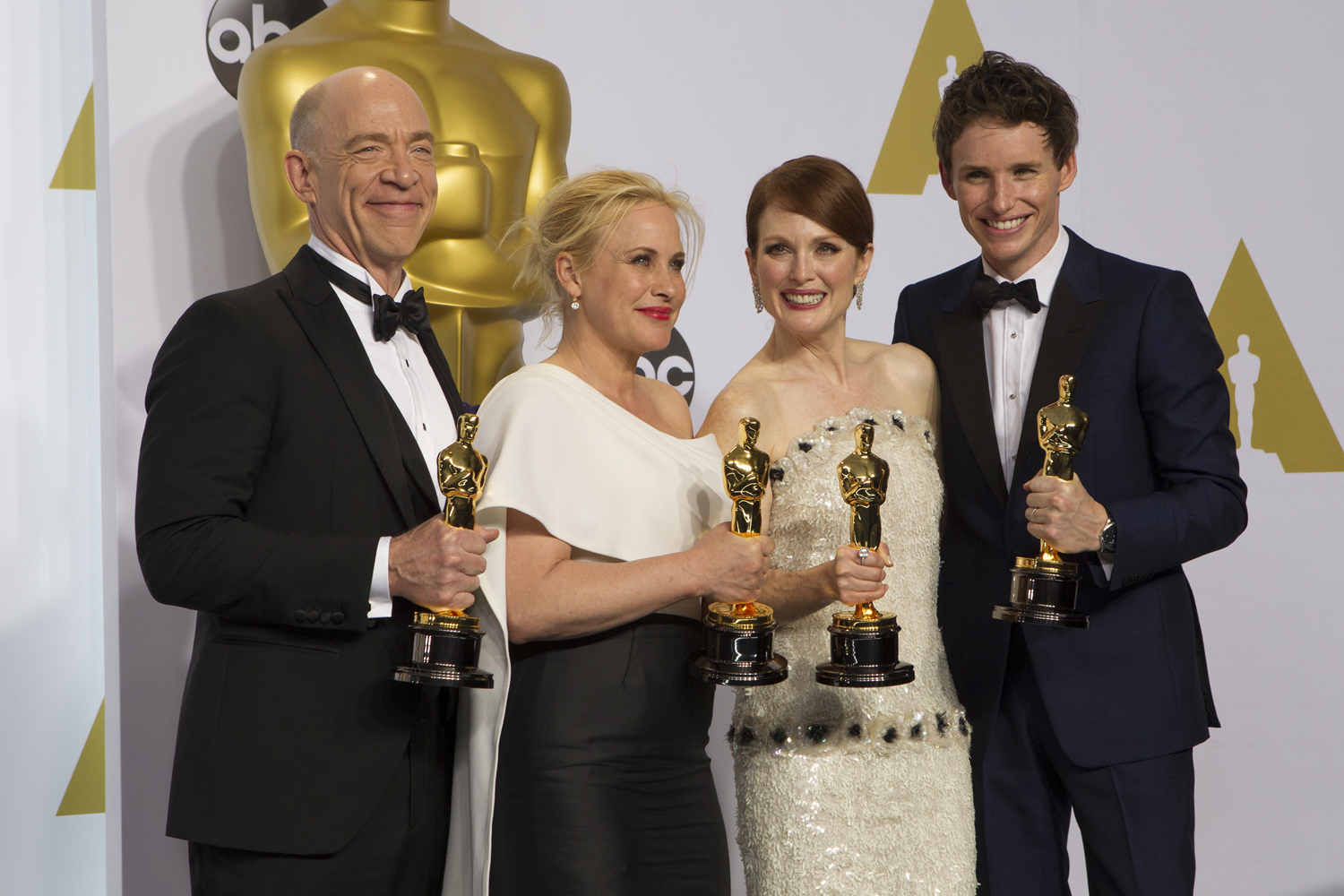
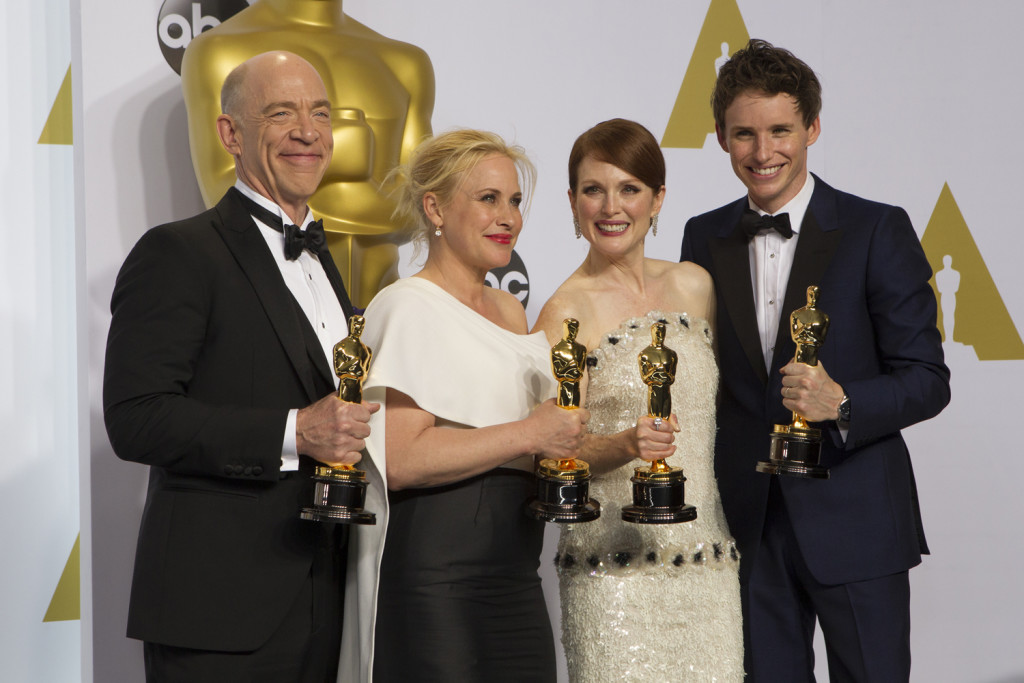
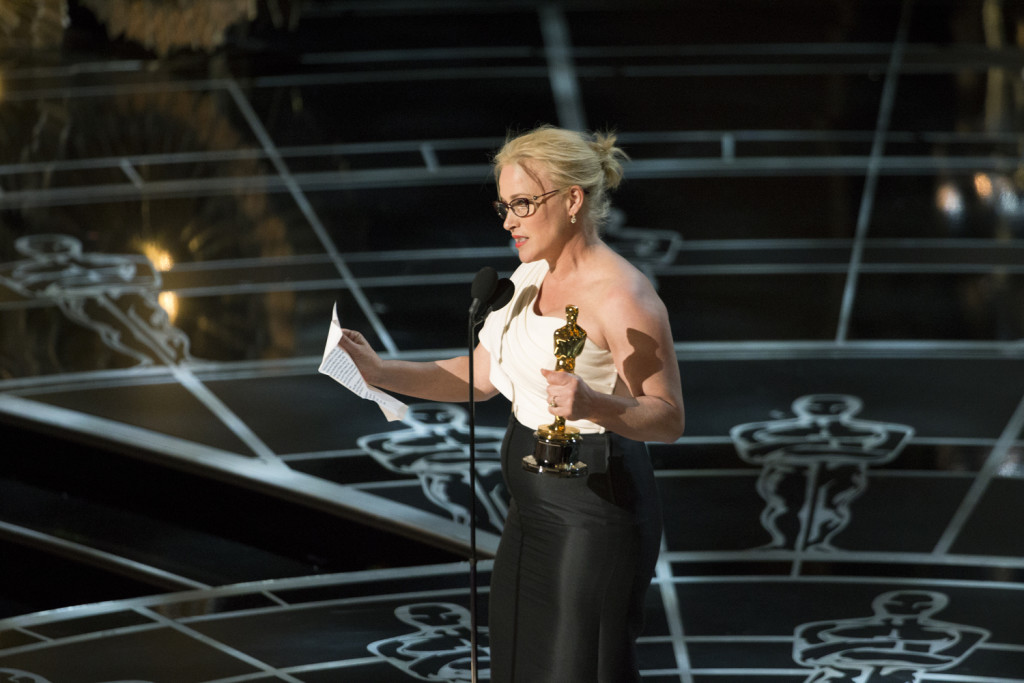
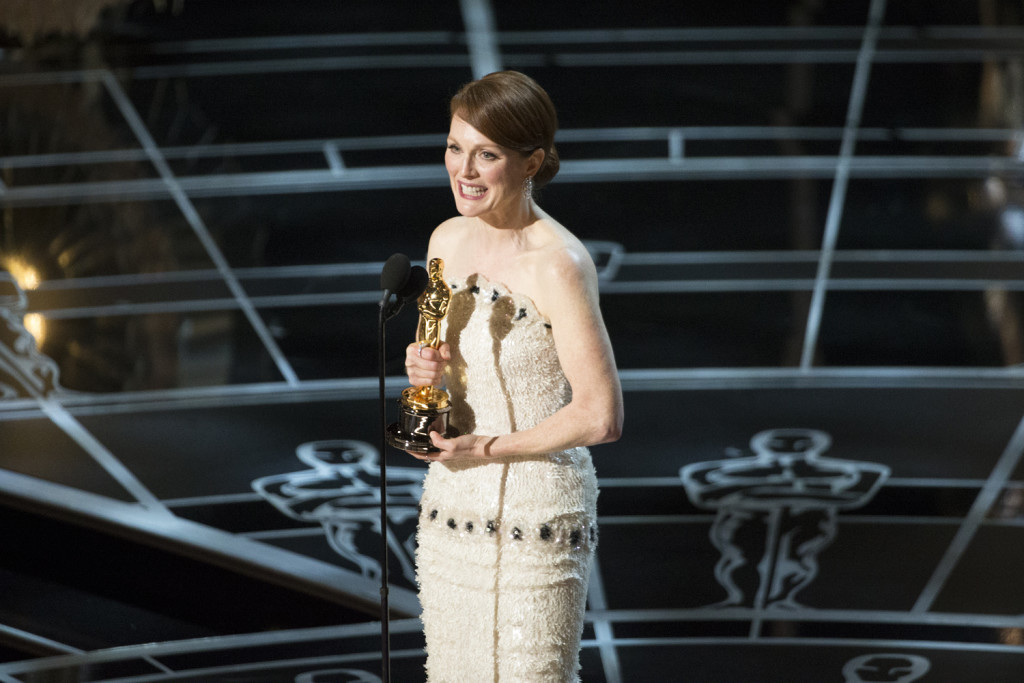
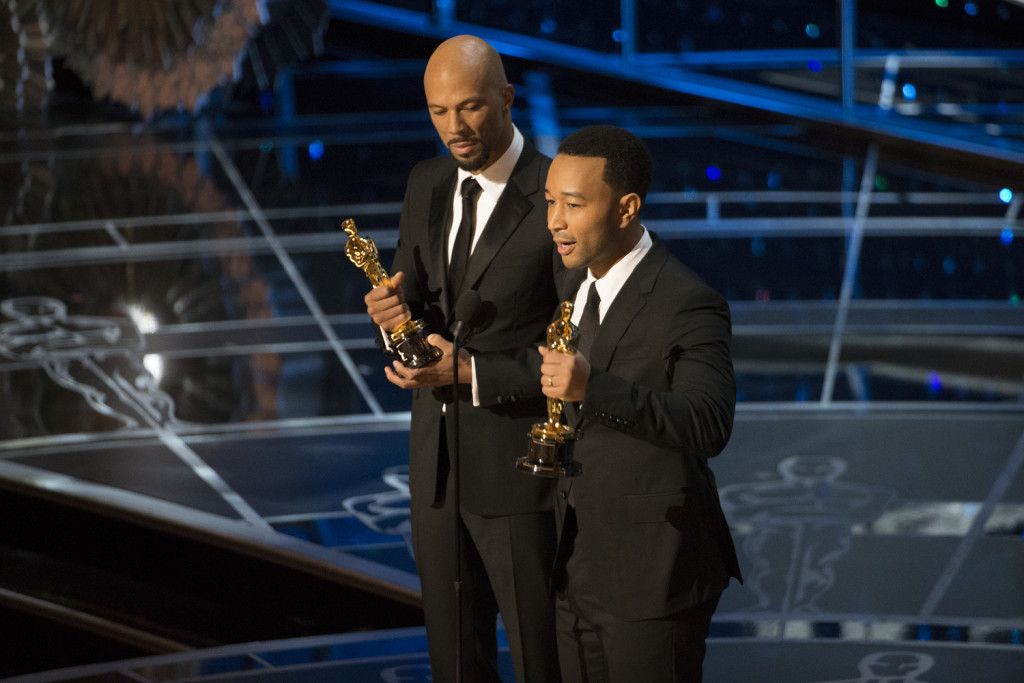

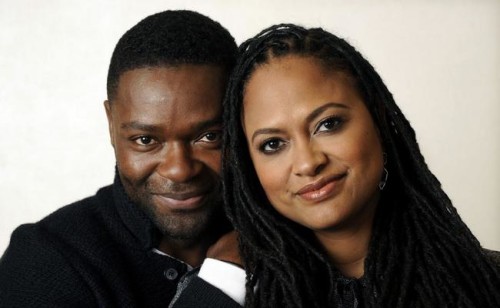
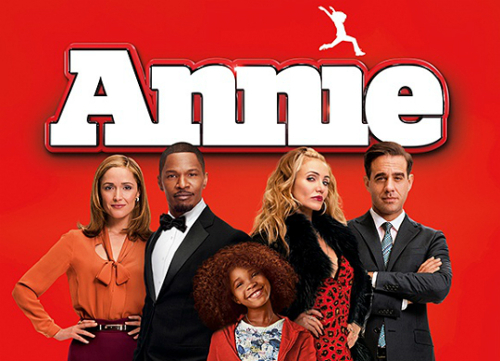
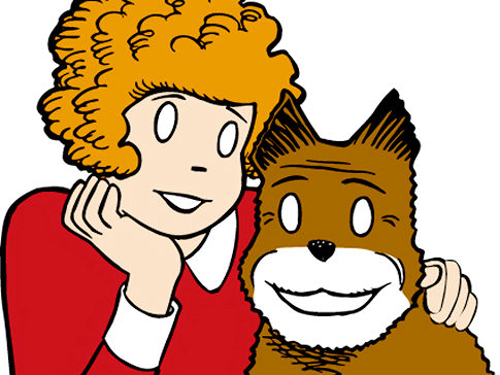
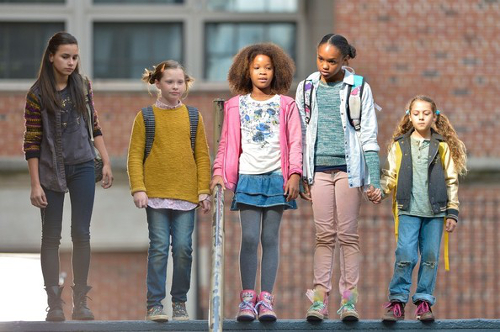
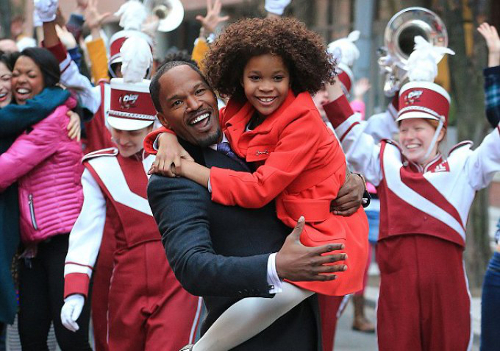
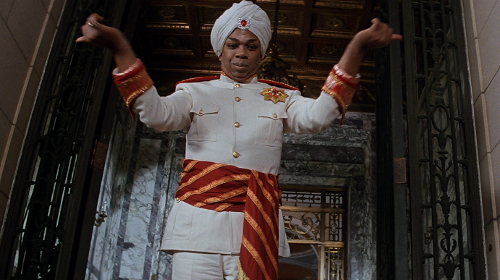
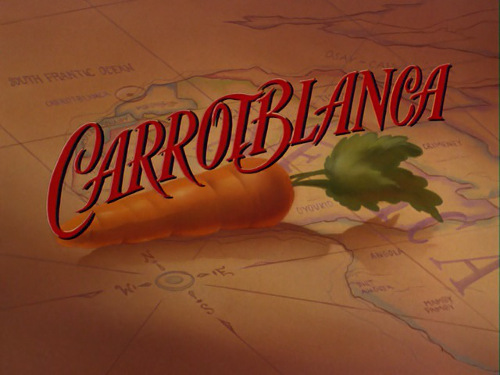
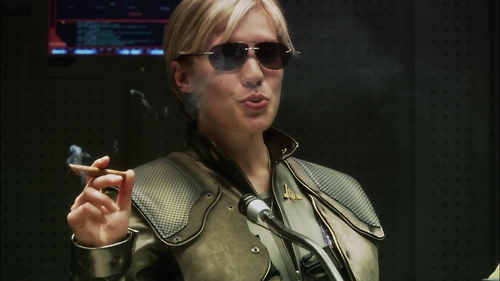
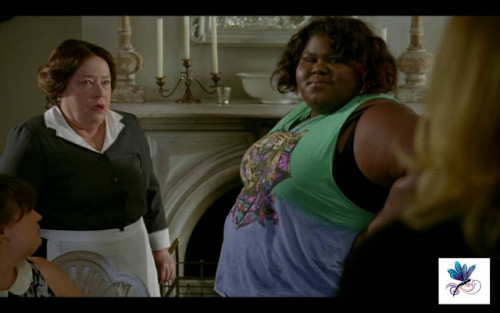



![smart-guy-51260ce141e48[1]-700x700-700x700](http://www.btchflcks.com/wp-content/uploads/2015/01/smart-guy-51260ce141e481-700x700-700x700-e1422285159983.png)
![1317388177_78a0fc2984a11736cf65421255517515_midi[1]-700x700-700x700](http://www.btchflcks.com/wp-content/uploads/2015/01/1317388177_78a0fc2984a11736cf65421255517515_midi1-700x700-700x700-e1422285191345.jpg)
![Smart-Guy-tahj-mowry-24518104-300-223[1]-700x700-700x700](http://www.btchflcks.com/wp-content/uploads/2015/01/Smart-Guy-tahj-mowry-24518104-300-2231-700x700-700x700-e1422285219845.jpg)

